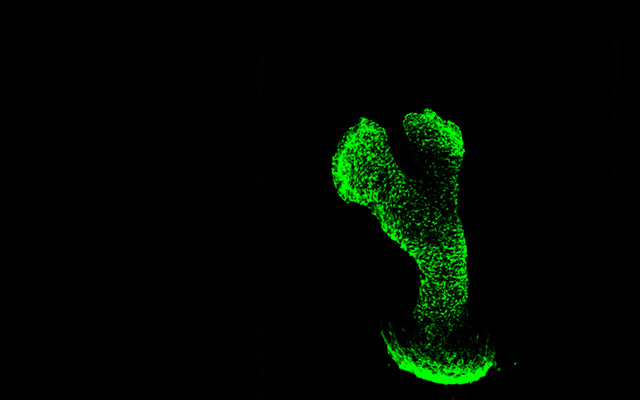Effect of Aucubin on Radiotherapy Sensitivity of Esophageal Cancer Cells by Regulating RhoA/ROCK Signaling Pathway
SONG Yuling1, WANG Xuechang1, JIN Man2, YANG Shirong1*
This article investigated the effect of AU (aucubin) on the radiotherapy sensitivity of esophageal cancer cells (EC9706 cells) and its effect on RhoA/ROCK (Ras homolog gene family member A/Rho-associated with curly helix binding protein kinase) signaling pathway. EC9760 cells were treated with aucubin at concentrations of 0, 25, 50, 75, 100, and 125 μmol/L for 24 hours, and the cell survival rate was measured by CCK-8 assay. The optimal concentration of aucubin was screened for subsequent experiments. EC9706 cells were grouped: Control group; radiotherapy group (6Gy group); AU group; AU+6Gy group; AU+6Gy+RhoA activator group (AU+6Gy+Naciclasine group). Cloning formation experiments and Edu assay were used to detect cell proliferation. Flow cytometry was used to test cell apoptosis. ELISA (enzyme linked immunosorbent assay) was used to measure TNF-α (tumor necrosis factor-α), IFN-γ (interferon-γ), and IL-2 (interleukin-2) in the supernatant of cell culture medium. The phalloidin staining method was used to observe the cytoskeleton. Western blot method was used to test the level of Bcl-2 (B-cell lymphoma-2), Bax (Bcl-2 associated X protein), E-cadherin, N-cadherin, RhoA and ROCK proteins in cells. The esophageal cancer transplant tumor model was constructed, and the mass and volume of the tumor were measured. Western blot was used to test RhoA and ROCK proteins in tumor tissue. Compared with 0 μmol/L, AU at concentrations of 25-125 μmol/L could reduce the viability of EC906 cells. Therefore, 100 μmol/L AU was selected for subsequent experiments. Compared with the Control group, the 6Gy and AU groups had greatly lower cell clone formation number, Edu positivity rate, the level of TNF-α, Bcl-2, N-cadherin, RhoA, and ROCK proteins, while had higher cell apoptosis rate, and the levels of IFN-γ, Bax, E-cadherin, and IL-2, as well as the fluorescence intensity of F-actin (P<0.05). Compared with the 6Gy and AU groups, the AU+6Gy group showed manifestly lower cell clone formation number, Edu positivity rate, and the levels of TNF-α, Bcl-2, N-cadherin, RhoA, and ROCK proteins, and had greatly higher cell apoptosis rate, and the levels of IFN-γ, Bax, Ecadherin, and IL-2, as well as the fluorescence intensity of F-actin (P<0.05). Compared with the AU+6Gy group, the AU+6Gy+Naciclasine group showed manifestly higher cell clone formation number, Edu positivity rate, and levels of TNF-α, Bcl-2, N-cadherin RhoA, and ROCK proteins, while had lower cell apoptosis rate, and the levels of IFN-γ, Bax, E-cadherin, and IL-2, as well as the fluorescence intensity of F-actin (P<0.05). The nude mice transplant tumor experiment showed that compared with the Control group, the weight and volume of the nude mice and the protein levels of RhoA and ROCK in the 6Gy and AU groups were significantly decreased (P<0.05); compared with the 6Gy and AU groups, the weight and volume of the nude mice and the protein levels of RhoA and ROCK in the AU 6Gy group were significantly decreased (P<0.05). AU may enhance the radiotherapy sensitivity of esophageal cancer cells by inhibiting the signal transduction of RhoA/ROCK pathway.




 CN
CN EN
EN